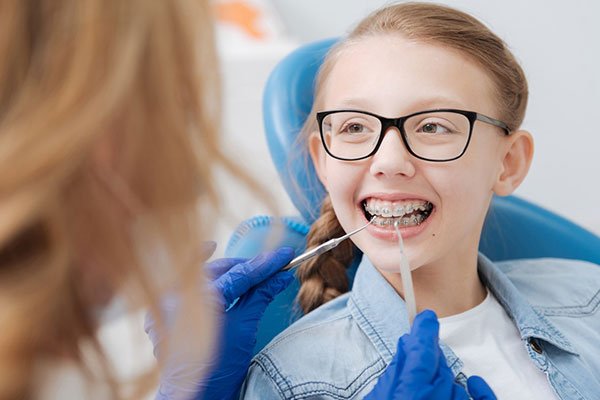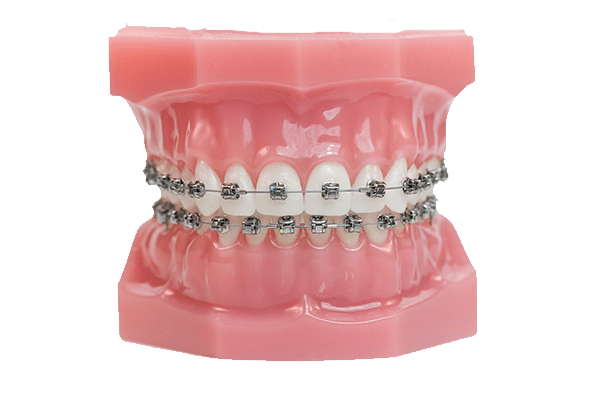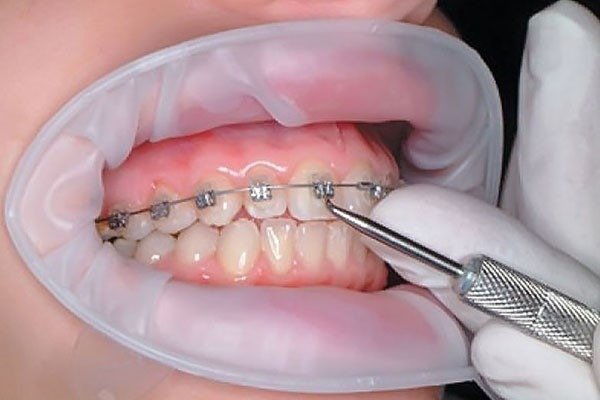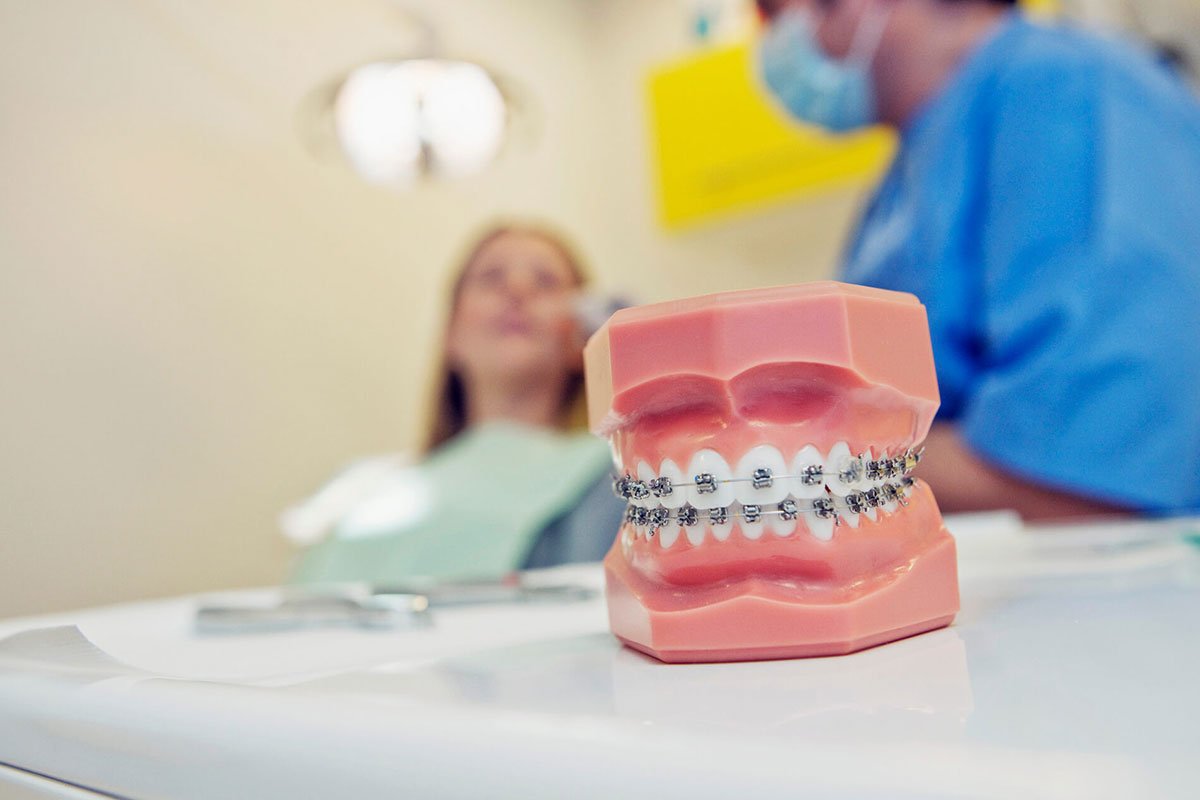Orthodontic braces treatment are appliances that help correct various dental irregularities, including crowded, crooked, or misaligned teeth. The majority of people get braces earlier in their lives, mostly when they are teenagers, but adults can get them too in order to eliminate oral imperfections.
Braces slowly straighten and align your teeth and give you a normal bite. In addition to ensuring your oral health and making eating more comfortable, braces also provide people with straight and beautiful smiles.
ORTHODONTIC BRACES TREATMENT:
Orthodontic braces put gradual pressure on your teeth and move them in the right direction slowly. The bones in the jaw will also change as the pressure goes into effect, which allows the teeth and their roots to move.
Early dental intervention is necessary for both children and adults but kids can benefit more from orthodontic treatments as their oral structures are still in the growing phase.
They are the ideal candidates for orthodontic treatments because their jawbone is soft. Moreover, it is easier to eliminate dental problems in the initial stages as they do not require any complex procedures.
Early orthodontic treatment allows dental professionals to:
- Correct your child’s jaw to ensure that the permanent teeth come in straight.
- Create more space between overly crowded teeth.
- Improve minor speech problems.
1. THERE IS NO AGE LIMIT FOR ORTHODONTIC BRACES:
Most people think of orthodontic treatments when they are teenagers. But nowadays an increasing number of adults opt for dental braces and these braces can benefit anyone who has healthy teeth and gums. Adults usually get braces for numerous reasons.
It could be that they had braces earlier but failed to wear a retainer and their teeth have shifted, or they wish to treat malocclusions or want to realign and straighten their smile through orthodontic treatments.
Whatever the reason is, anyone can get their teeth aligned with the help of braces.
2. YOUR “BITE” IS AS IMPORTANT AS THE STRAIGHTNESS AND AESTHETICS OF YOUR TEETH:
Many people think that braces only make teeth straight but they can also treat bite issues. Straighter teeth fit more securely around your gums, are easier to clean, and also prevent bite irregularities. On the other hand, when you have malocclusion.
It can cause uneven wear on your teeth and deterioration of your jaw. Misaligned bites are often more prone to bacteria and plaque buildup due to improperly positioned teeth. It can also lead to various gum diseases, cavities, and even heart disease.
While teeth are the most visible aspects of your smile, having a healthy bite can eliminate all the above-mentioned problems and allows your teeth to function properly. Correcting a malocclusion can also prevent crowding while improving major jaw problems.
Such as temporomandibular joint disorders. That’s why orthodontic braces prove to be the best way to correct any bite or other functional problems.
3. COST AND TREATMENT TIMES VARY:
Sometimes, braces can be expensive. However, they don’t have to be out of your reach just because of their cost, and financial worries should not avoid or delay treatments.
If braces are not covered by dental insurance, dentists can work with you and put together a payment plan that you are comfortable with.
4. TREATMENT TIME USUALLY DEPENDS ON THE SEVERITY OF ORAL PROBLEMS:
Many people tend to think that getting braces is a long process and can take years. However, in reality, it mainly depends on each individual case. While the average treatment is two years.
Dentists usually evaluate each individual’s situation and create a treatment plan that is specific to the complexity of the work required. In this way, patients can spend just the right amount of time required in this treatment process.
THE SIGNIFICANT DIFFERENCE BETWEEN ADULT AND CHILDREN OR TEEN ORTHODONTICS:
There are usually no significant differences between adult and child orthodontics; however, in children and teens, the jawbones are still in the growing stage. But in the case of adults, these bones have fully developed.
Other differences include:
- Adults are more likely to experience gum recession or bone loss as compared to children due to gingivitis or advanced periodontal disease. However, patients with straighter teeth are less likely to get periodontal diseases. Therefore, adults require more complex procedures in order to treat these oral irregularities than children.
- Over time, an adult’s teeth can wear down and shift into different positions that can only be corrected with orthodontic care. Moreover, missing teeth can also cause other teeth to tilt, creating a bad bite and increasing the possibility of getting gum disease. Therefore, adults are generally more in need to correct their dental irregularities as compared to children and teens.
Many adults also choose orthodontic treatments because they received incomplete treatment as a child or teen. As an adult, they want to complete their dental treatments in order to achieve the healthy and beautiful smile they always desired.
WHY SHOULD YOU CONSIDER ORTHODONTIC TREATMENTS?
Straight and properly aligned teeth are healthier as they are easy to clean with flossing and brushing. This reduces the risk of various health problems. Moreover, a beautiful, straight smile helps build self-confidence, improves your quality of life, and gives you the freedom to smile without holding back.
Oral problems that are left untreated can get worse with time. Not getting appropriate orthodontic treatment when it is required can create long-term health issues, and usually end up costing you more in the end. Nowadays, dental braces are inconspicuous and less noticeable.
The brackets that attach to each tooth are smaller and can also be attached to the back of the teeth where they are less visible. In addition, brackets can be made of ceramic, plastic, metals, or a combination of these materials and can be fabricated according to a person’s tooth color.
In addition, brackets can be customized and shaped according to the tooth impressions of patients in order to provide a comfortable fit. Additionally, braces can either be fixed or removable. Fixed braces are worn at all times and can only be removed by a dentist.
Whereas removable braces can be taken out whenever a person wants to.















